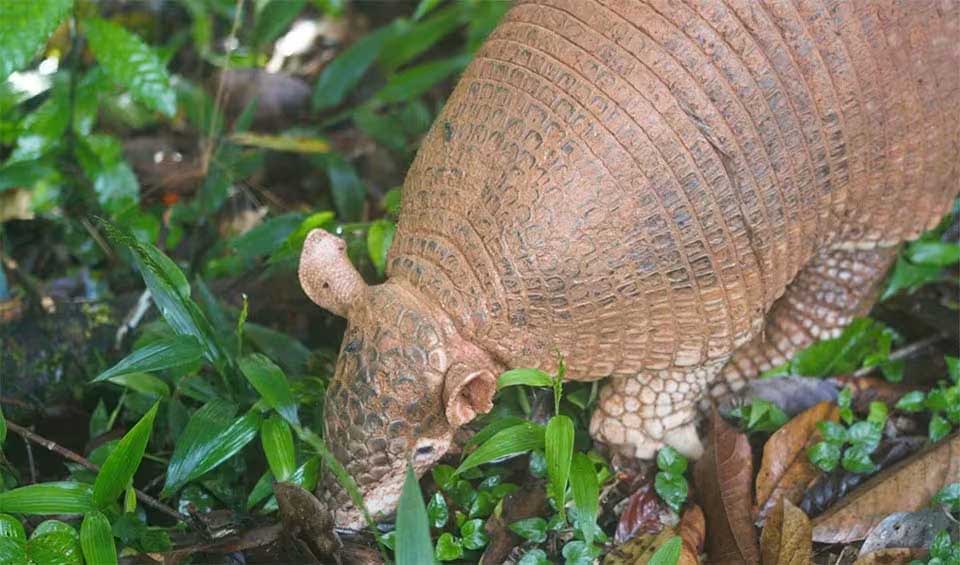Dasypodidae – Armadillos
Armadillos, ‘little armored ones’ in Spanish, are New world’s real-life armored Pokémons
This armor, made of keratinized plates, provides armadillos with a distinctive protective shell that is not found in any other group of mammals. The bony plates, or scutes, are separated by three to nine flexible skin bands, allowing these creatures remarkable flexibility. This flexibility is crucial for their survival, as many armadillo species can roll themselves into a tight ball when threatened, effectively shielding their vulnerable underparts from predators.
Armadillos are part of a fascinating evolutionary lineage, with their closest living relatives being sloths and anteaters. However, one entire subfamily of armadillos, the Glyptodonts, is now extinct. Glyptodonts were much larger than modern armadillos, with some species the size of a small car. They roamed the grasslands and forests of the Americas until the end of the last Ice Age, about 10,000 years ago. The arrival of humans in the Americas is believed to have contributed to their extinction, as these giant, slow-moving animals were likely hunted for their meat and their massive carapaces.
Today’s armadillos exhibit a wide range of sizes, from the tiny pink fairy armadillo, which is barely larger than a human hand, to the giant armadillo, which can weigh as much as 60 kilograms (about 132 pounds). Despite their size differences, all armadillos share common traits that aid their survival. They are proficient diggers, using their sharp claws to excavate burrows for shelter and to unearth their primary food source: insects. Armadillos have a keen sense of smell that compensates for their poor eyesight, helping them locate food and navigate their environment.
Armadillos are also surprisingly adept swimmers, capable of holding their breath and walking underwater across the bottoms of streams and ponds. Some species can even inflate their intestines to increase buoyancy, allowing them to swim across larger bodies of water.
Genera in this family
Unable to roll into a complete ball like some other armadillos due to excessive dermal plates
Nicknamed “sand swimmer,” able to burrow through the soil as fast as a fish swimming in the water
Able to swim and will shallow air just before entering the water to assist with buoyancy
The largest living armadillo grows up to 1.5 m (5 ft) in length, yet it feeds on tiny termites!




